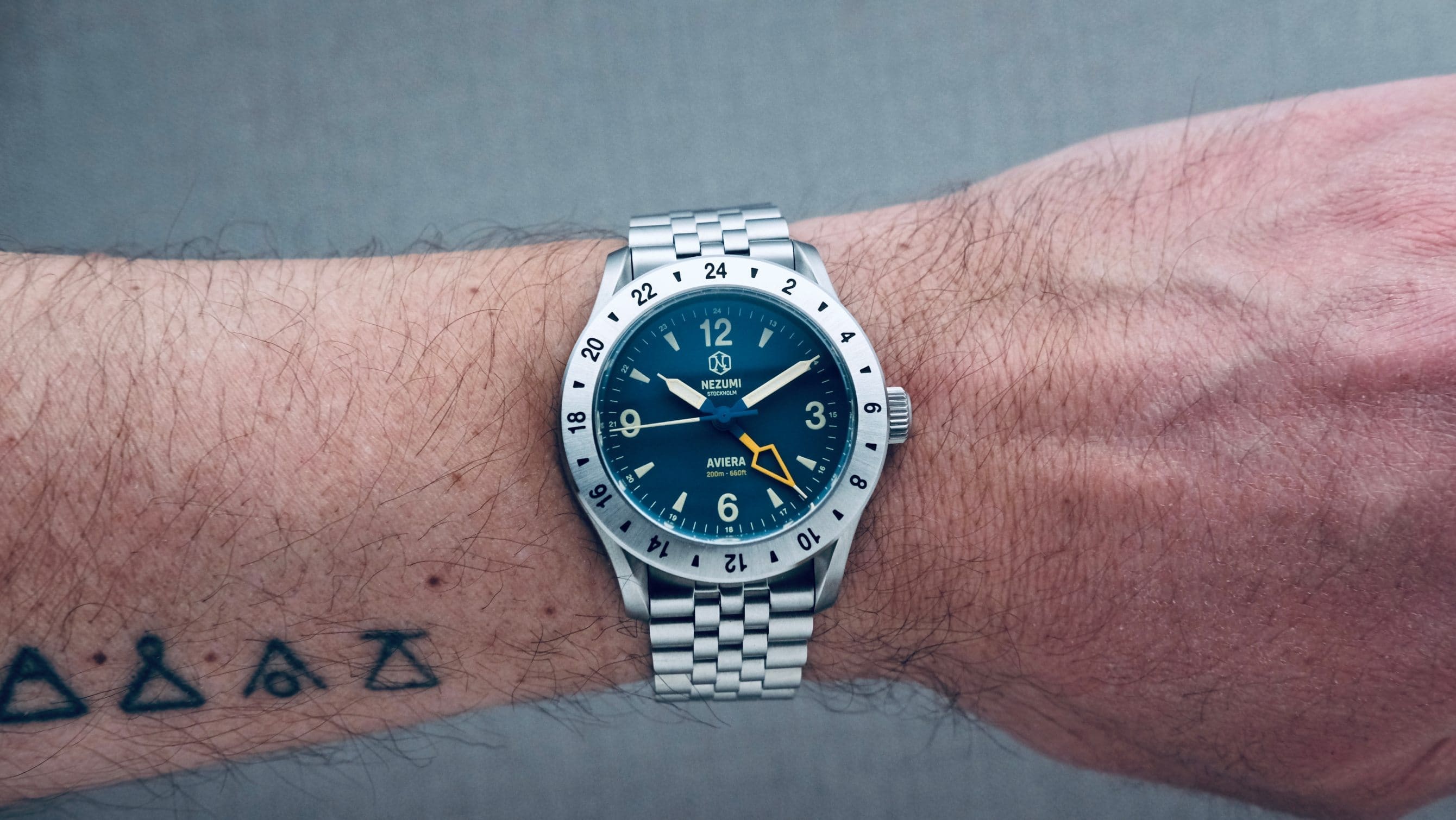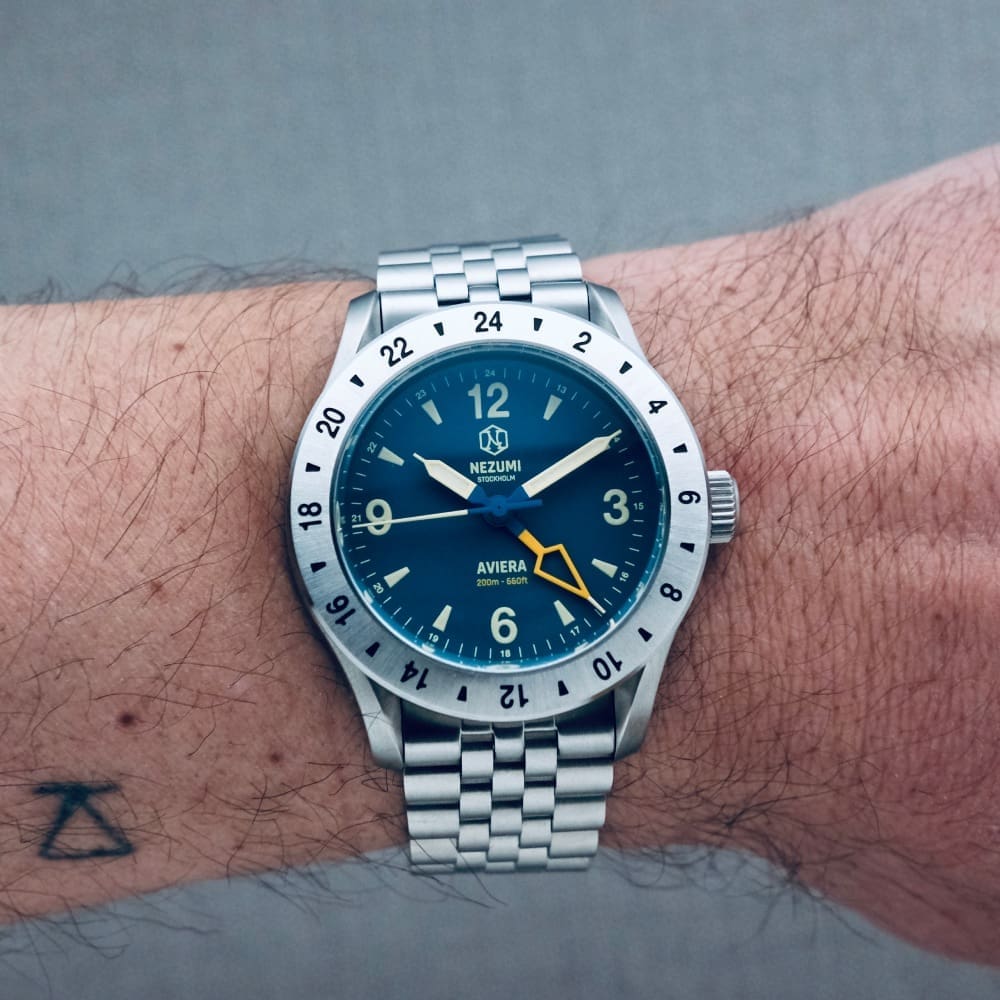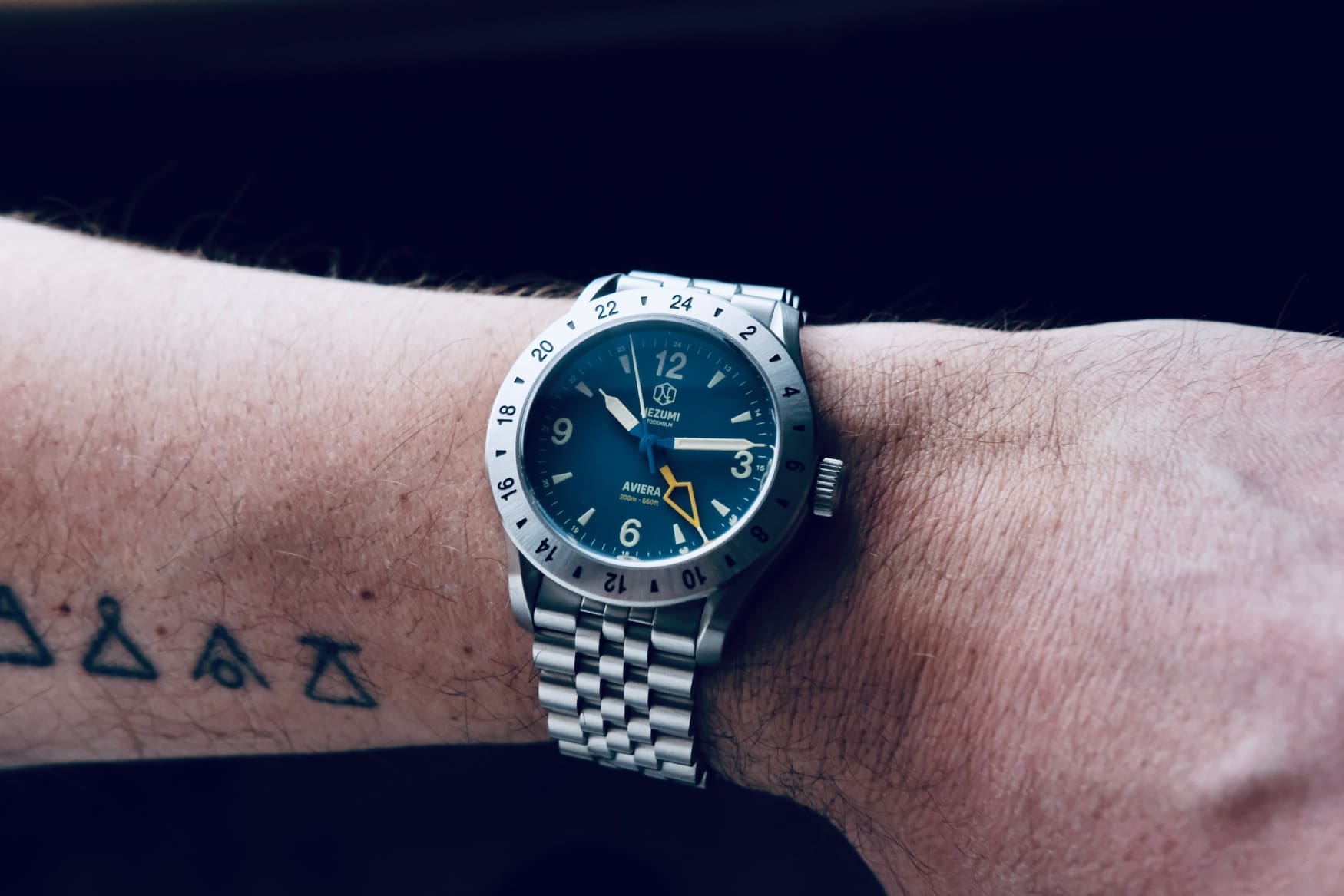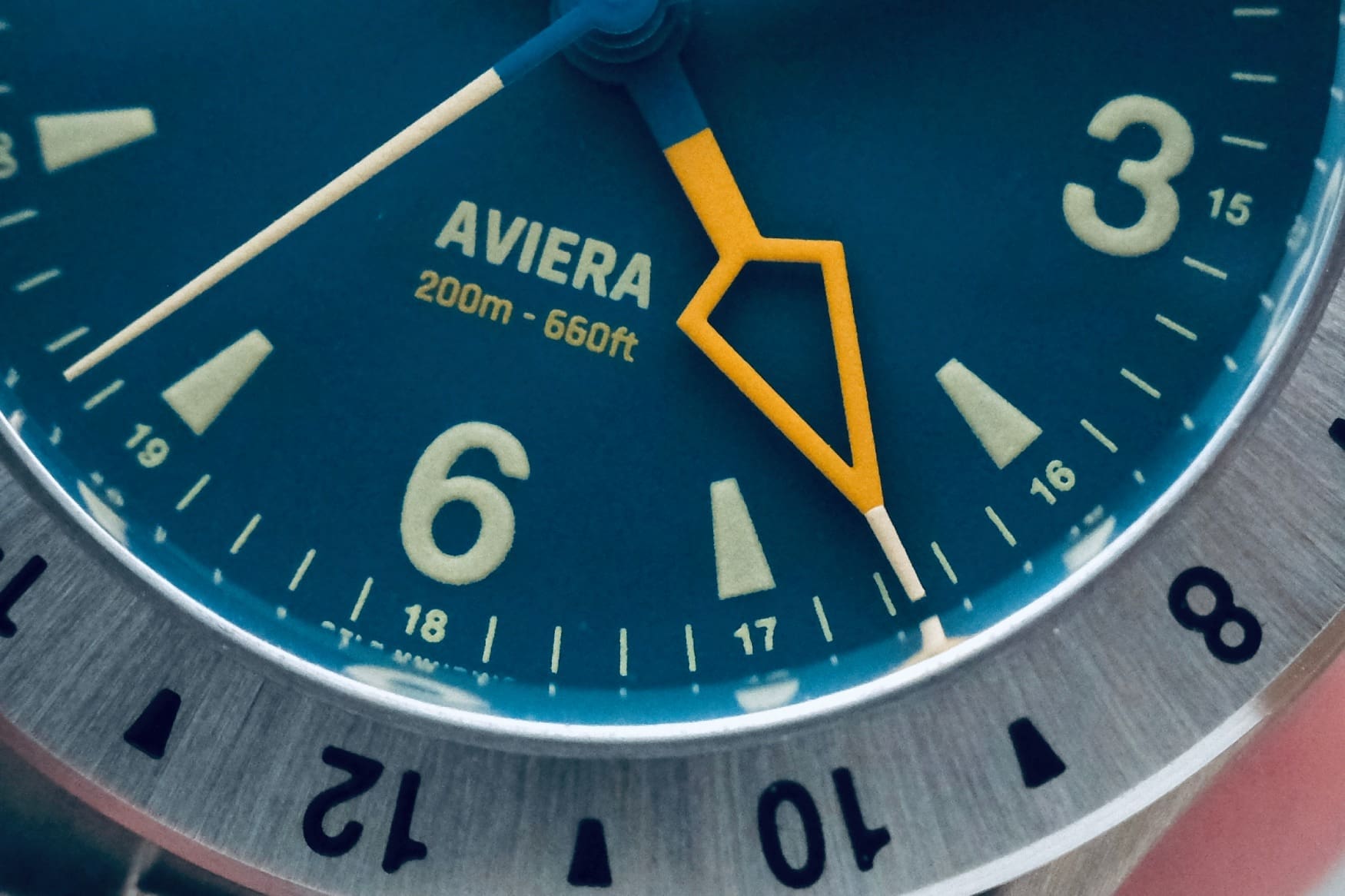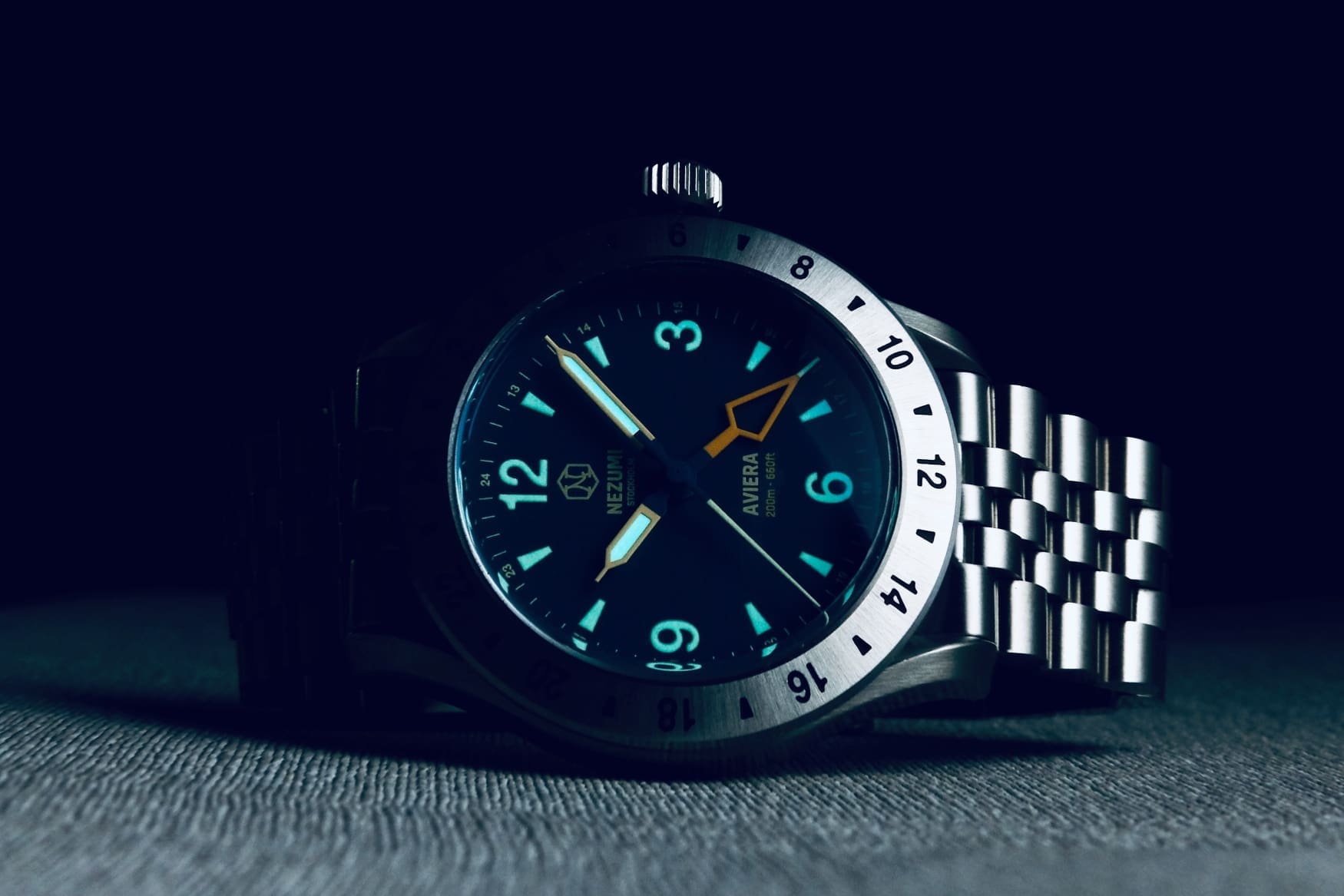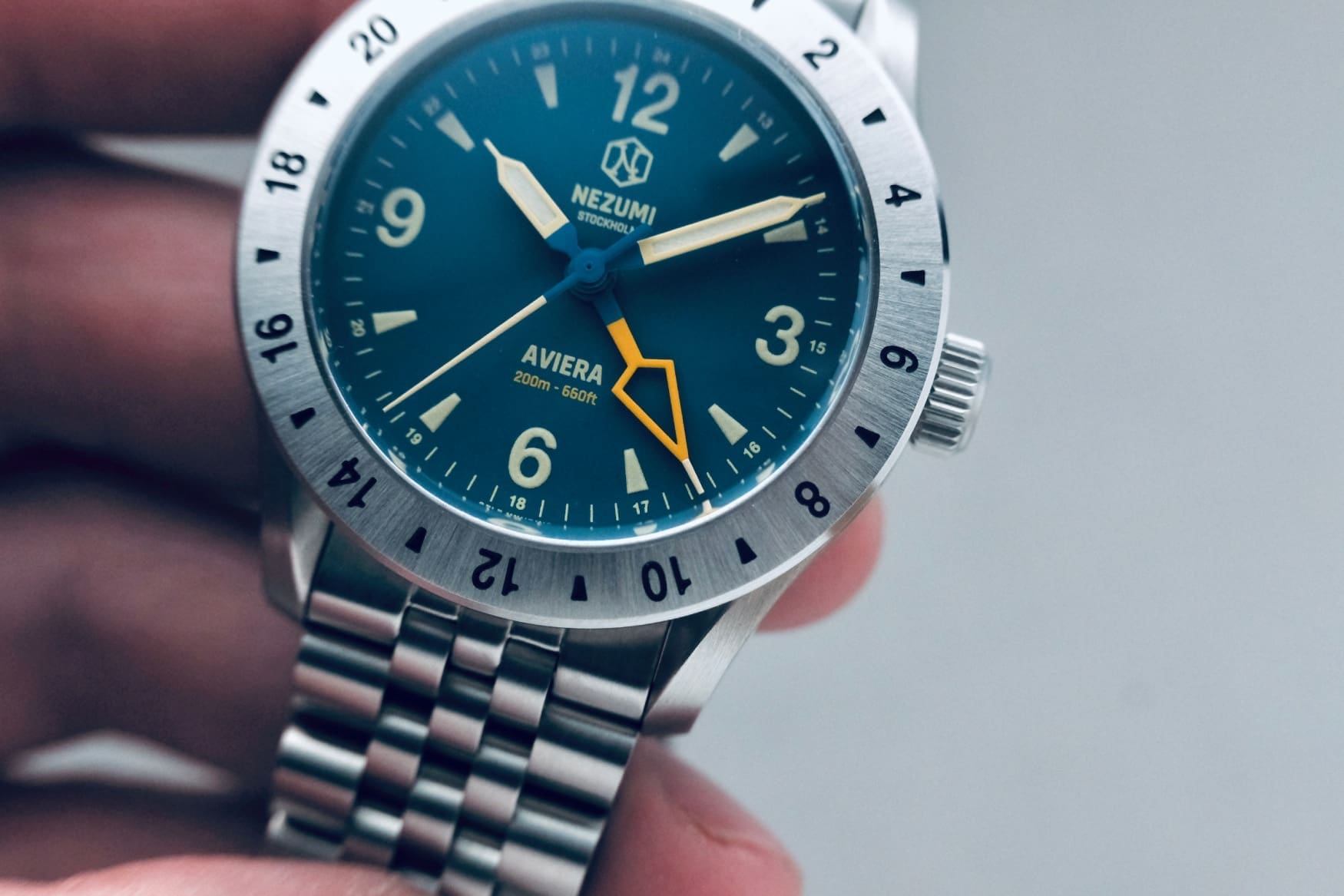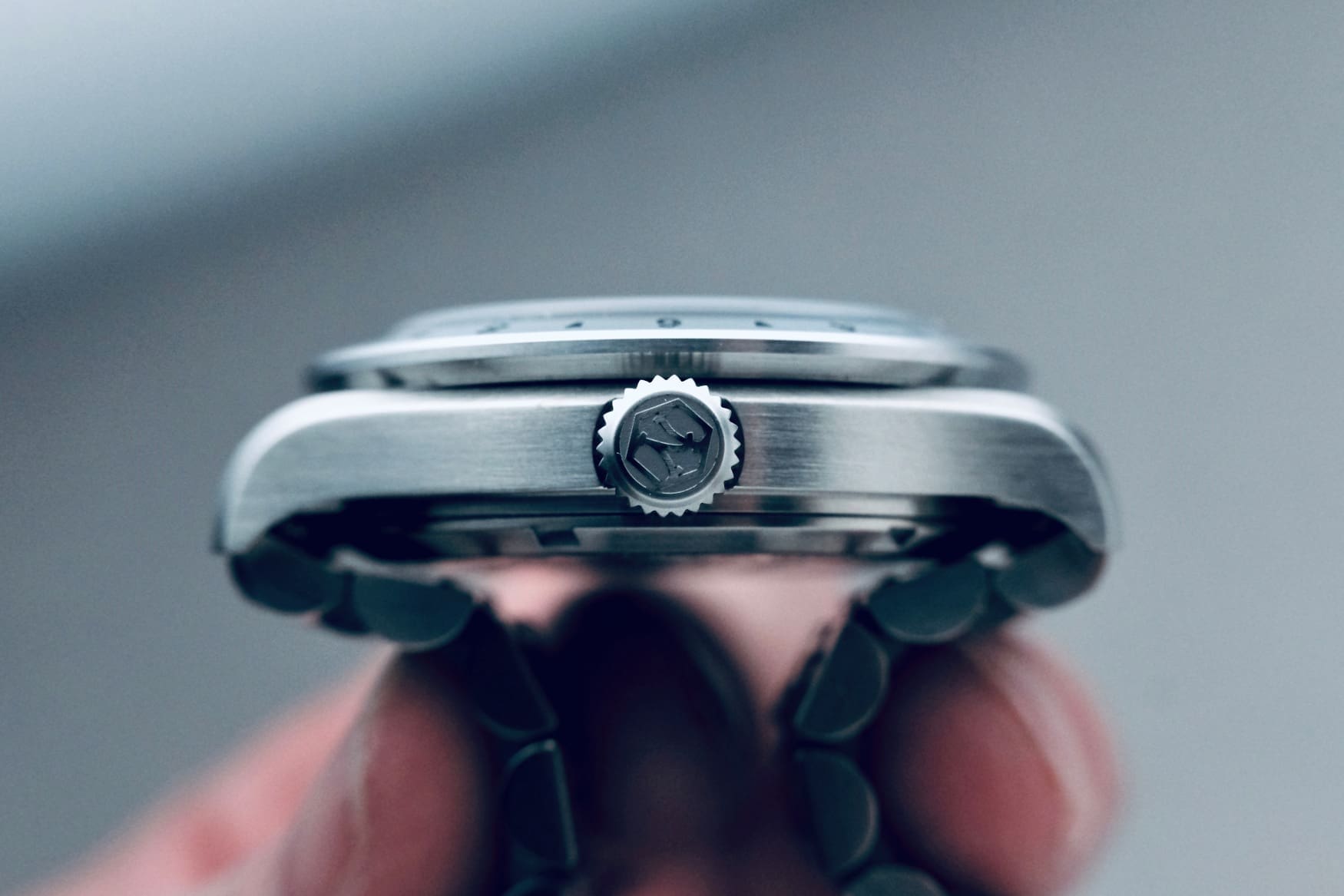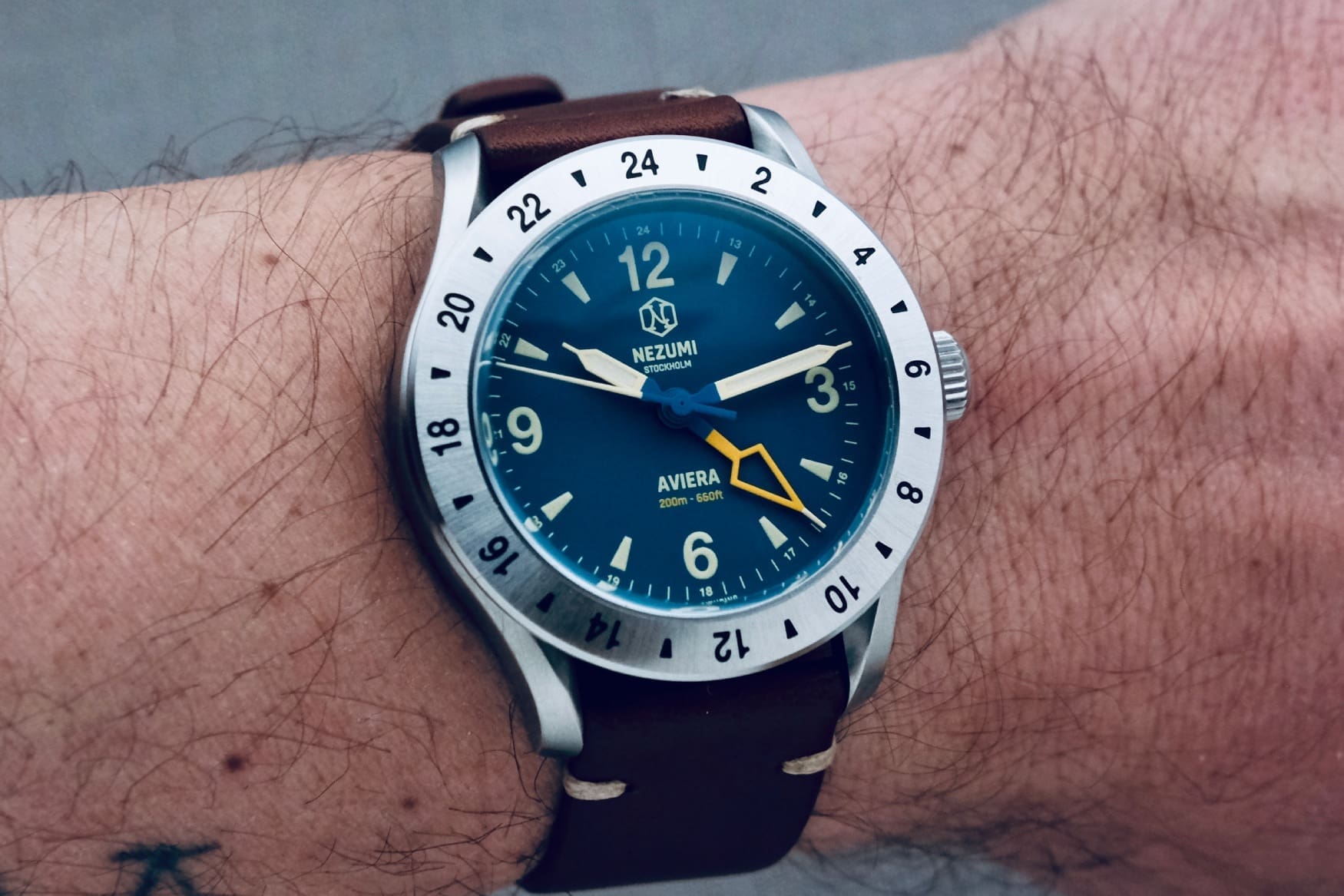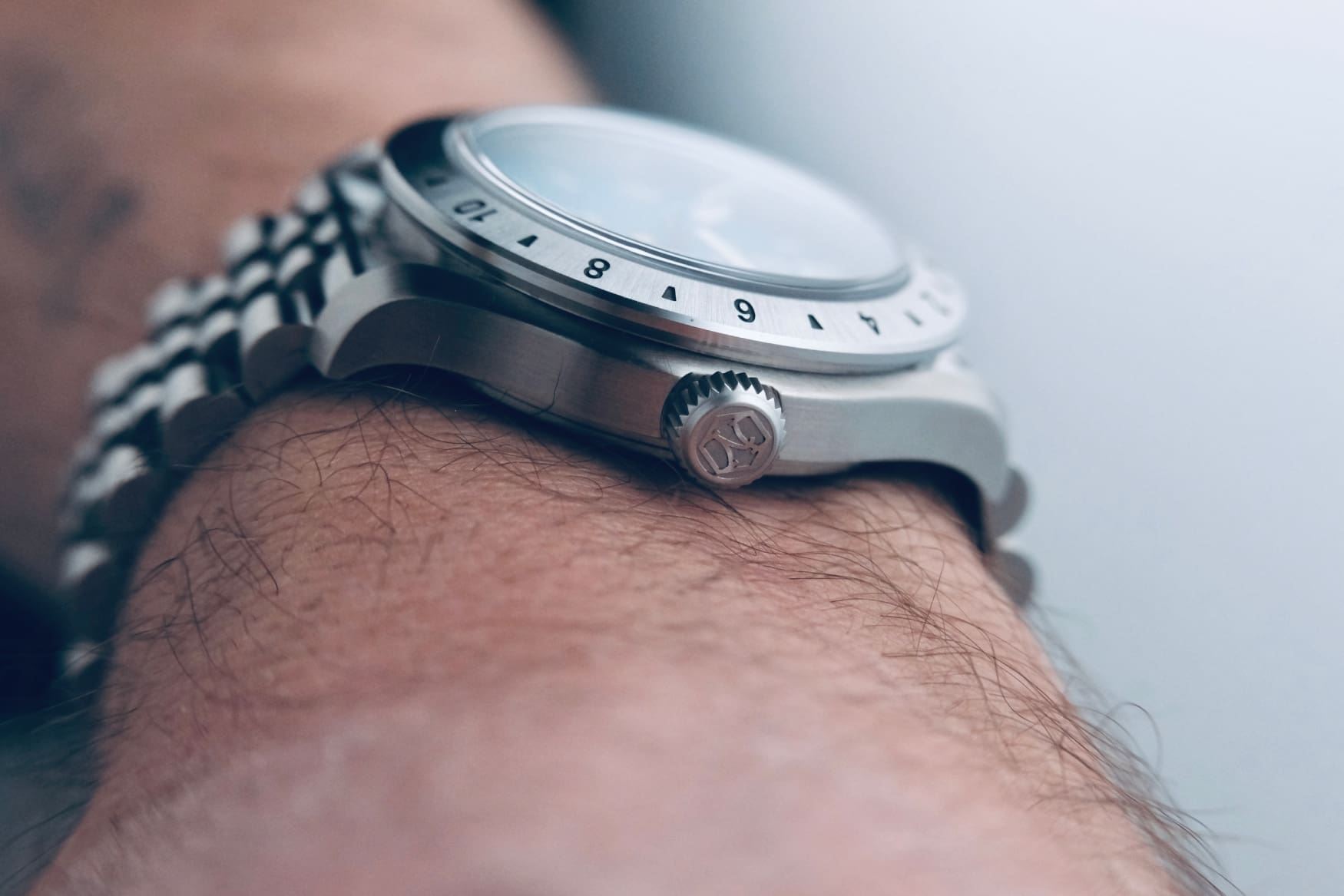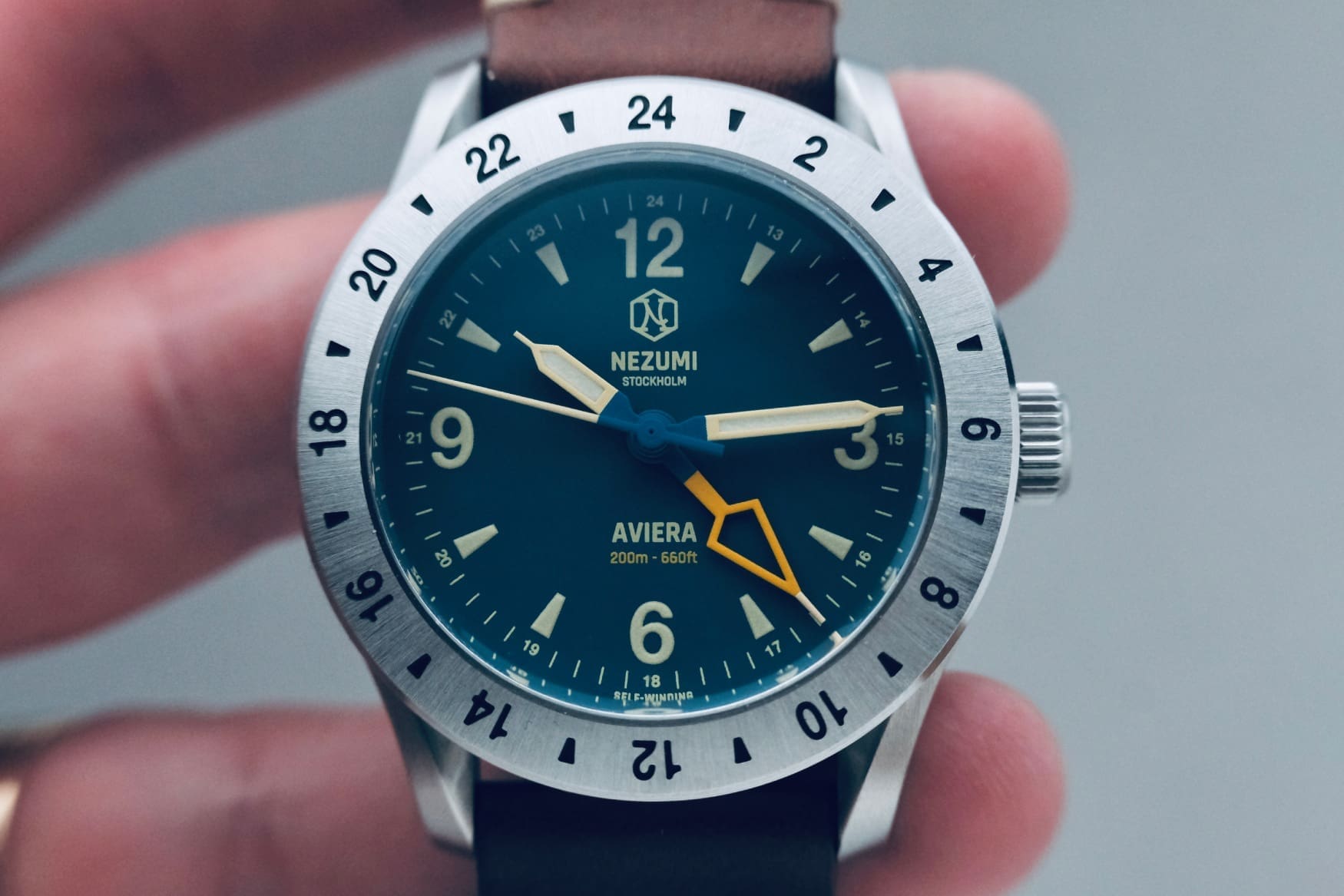The Nezumi Aviera is a GMT that looks like nothing else
Time+TideIf you read Time+Tide, you know very well that GMTs are as popular as they have ever been. I would actually say, much more popular. I cannot think of any major Swiss or Japanese brand that hasn’t released a GMT in the past two years. And looking at the independent/microbrand world, it seems that each day a new GMT pops on the market. What most brands do is to adapt one of their existing designs to accommodate the GMT complication. Make the case a little thicker, the dial a little wider, and you got yourself a GMT based on the chassis of, say, a diver. With that in mind, sometimes I see brands develop a new design for a GMT, one that makes sense given the function the watch is meant to fulfil. This rare occurrence is what makes one brand stand apart from the crowd and that is the case of the Stockholm based-Nezumi and their latest release, the Aviera GMT.
Finally, a GMT that looks different
Nezumi has been around since 2011 and has distinguished itself by taking a unique approach to horological design. In some ways, it borrows elements from iconic models because they understand that a brand doesn’t have to continuously reinvent the wheel. For example, the brand was inspired by the lyre lug design found on the Omega Speedmaster, and paired its own interpretation of it with the brand’s unique design language. I feel it’s absolutely fine – and unavoidable – to see lyre lugs on non-Omega watches, just like it is understood that a dive watch can come with a date magnifier. Saying otherwise would be the equivalent of saying that Tesla has the monopoly for the technology that powers its cars.
Upon opening the sleek box the Aviera GMT came in, I was struck by how fresh it looks. In some ways, it feels familiar and in other ways, it feels exotic. The familiarity comes from the 24-hour scale engraved on the fixed stainless steel bezel and the lyre lug design. The novelty, on the other hand, comes from the dial layout and massive GMT hand, although the latter is unobtrusive given that its skeletonised. The lower part of the stem is painted black, as it is the case on the hour and minute hands, while the larger portion is painted yellow.
The rest of the dial also strikes me as being different from what I’m used to seeing. I particularly like the syringe-style hour and minute hands that perfectly match the hour markers and which are legible, while the needle-shaped seconds hand just blends in the dial. The Arabic numerals at the 12-3-6-9 also aid with legibility and look well-proportioned in regards to the triangle-shaped hour markers. There is also a 24-hour military scale printed on the chapter ring which, although doesn’t serve an obvious purpose here, works perfectly with the design.
8 years in the making
Although I would be the first one to deplore the absence of a date complication on a GMT, I do respect the brand’s dedication to preserving the harmony of the design. Placing a date aperture on the wrong part of the dial can be a deal-breaker for many, and there is actually a sub-trend of dateless GMTs existing within the now popular design. The Aviera GMT is not the first traveller’s watch to come sans a date, and given the way the Aviera looks, I wouldn’t have been able to make a sensible suggestion as to where to place it. Looking at the brand’s catalogue, it’s clear that the brand is insistent on it, something that is somewhat of a ballsy move given how many watch enthusiasts are adamant about getting a date on their watches.
Looking at the design of the Aviera, it is clear that David Campo, the brand’s founder, spent a lot of time putting it together. Like a sculptor who takes months chiselling tiny pieces of marble from a statue, or a landscape designer who, slowly but surely, creates the shape of a garden. In fact, the design of the Aviera was made eight years ago, long before that micro and independent brands started making GMTs. He had a vision for making the right GMT and took his time to let the design mature in his creative mind. What David was missing was the right calibre to put inside.
Honestly, if it wasn’t for Seiko’s NH34 and Miyota’s 9075, we wouldn’t have seen such a rise in popularity for this genre of watches. This is not to say that independent brands didn’t make GMTs before, because they were, however these two calibres truly changed the game. You wouldn’t be surprised, therefore, to know that Nezumi opted for the NH34 for the Aviera GMT as it is an affordable and reliable movement. Nezumi could have put a Soprod or a Sellita inside, however either option would have unnecessarily increased the retail price of the Aviera. I would add that putting a more expensive movement means, more often than not, having to compromise elsewhere in terms of quality or design in order to preserve an attractive price tag.
A GMT Made for True Adventurers
Lastly, I would be remiss not to spend some time gushing over the specs. If you have heard of Nezumi before, you would know that they make well-priced tool watches that could give large Swiss brands a run for their money in terms of value. Nezumi also is known for making well-proportioned watches and the Aviera GMT is no different. It comes with a case diameter of 40mm, a lug-to-lug of 47mm, a thickness of 12mm (13.55mm including the double domed sapphire crystal), and a 20mm lug width. These are great dimensions for a traveller’s watch, and one added bonus the Aviera comes with is 200 metres of water resistance made possible thanks to a screw-down crown and case-back.
A 200 metres depth rating means you can comfortably dive with the Aviera, which is a good thing because it comes with generous applications of cream-coloured SuperLuminova on the hands and hour markers. And being a tool watch, it comes with a predominance of brushed surfaces which, combined with the modest case proportions, makes the whole package discreet on the wrist. The fit and finish on the Aviera is nice, and I would give the brand extra brownie points for the fully articulated Jubilee-style bracelet and its simple clasp design.
Final thoughts
As watch enthusiasts, we now find ourselves with many options to choose from when shopping for a GMT. Perhaps the first element that would make us lean toward one model over another is the way the watch looks, as for many the design is everything. It is thanks to a watch’s character that we connect to it, at least in my own experience. Then we would want to know how it is made and what kind of specs it comes with, something that is equally important for many. And finally, we would want to know how much it costs. On the basis of all those factors, the Nezumi Aviera is a highly attractive proposition.
Nezumi Aviera GMT pricing and availability:
The Nezumi Aviera GMT will be available from July 2023 onwards. Price: US$360 (Tropic strap), US$380 (leather strap), US$440 (steel bracelet)
| Brand | Nezumi |
| Model | Aviera GMT |
| Case Dimensions | 40mm (D) x 13.55mm (T) x 47mm (LTL) |
| Case Material | Stainless steel |
| Water Resistance | 200 metres |
| Crystal(s) | Domed sapphire |
| Dial | Black |
| Lug Width | 20mm |
| Strap | Tropic, leather or steel bracelet |
| Movement | Seiko NH34, automatic |
| Power Reserve | 40 hours |
| Functions | Hours, minutes, seconds, GMT |
| Availability | July 2023 |
| Price | US$360 (Tropic strap) US$380 (leather strap) US$440 (steel bracelet) |




